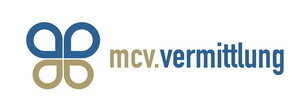Online PREMED Chemistry Course
Complete Chemistry Course for Medical and Science Applicants
🧾 What’s Included in the Full Course Package
📖 91 Theory lessons (clear, structured lessons in plain, exam-ready language)
📚 424 Visual Learning Cards (with pictures and text highlighting the major topics)
❓ 1000 Multiple choice questions (end of chapter quizzes, 50 questions per chapter)
🎥 22 Video Reviews with a total of ⏱ 8 hours and 47 minutes- the whole chapter explained lesson by lesson by a tutor- a student from the higher year of medicine.
🧾 Chapter-by-Chapter Overview
Foundations of Chemistry: In this chapter, we’ll explore the essential principles that form the basis of chemical science. From the structure of atoms to the behavior of matter, this chapter lays the groundwork for everything that follows in your study of chemistry. Whether you're aiming to understand everyday phenomena or dive into advanced scientific concepts, it all begins here.
🧪 PART 1: Inorganic Chemistry (Chapters 1–12)
Chapter 1: The Scientific Method and Properties of Matter
You will be introduced to scientific thinking and how matter is classified by physical and chemical properties. You'll explore the states of matter, changes of state, and foundational lab principles used throughout chemistry.
Chapter 2: Chemical Elements and Compounds
You will learn the difference between elements, atoms, and compounds. You’ll understand how atoms combine into molecules and how chemical formulas describe atomic composition and structure.
Chapter 3: Atomic Structure
You will explore the internal structure of atoms, including protons, neutrons, and electrons. You’ll understand atomic number, isotopes, and how electrons are arranged in shells and orbitals.
Chapter 4: The Periodic Table of Elements
You will discover how elements are organized by increasing atomic number. Learn about groups, periods, and trends like atomic radius, ionization energy, and metallic character, and how these relate to chemical reactivity.
Chapter 5: Chemical Bonding
You will explore how atoms form stable compounds through ionic, covalent, and metallic bonds. Learn about bond polarity, electronegativity, bond energy, and intermolecular forces such as hydrogen bonding and Van der Waals forces.
Chapter 6: Fundamentals of Inorganic Chemistry
You will learn to identify, name, and describe the properties of oxides, acids, bases (hydroxides), and salts. This chapter also includes their interactions in neutralization, redox reactions, and salt formation.
Chapter 7: Chemical Reactions and Stoichiometry
You will learn how to balance chemical equations, calculate molar and molecular mass, apply the mole concept, and classify types of reactions. You will also solve stoichiometry problems involving gases, solids, and solutions.
Chapter 8: Solutions
You will understand how solutions form, the role of solvents like water, and how to express concentration using molarity and other units. You’ll explore solubility, saturation, and the effect of temperature and pressure.
Chapter 9: Equilibria in Aqueous Solution
You will study reversible reactions, equilibrium constants, and Le Chatelier’s Principle. You’ll learn to apply equilibrium concepts to acid-base reactions, precipitation, solubility, and ionic equilibria.
Chapter 10: Elements of Chemical Kinetics and Catalysis
You will explore reaction rates, rate laws, and the influence of temperature, concentration, and catalysts. You’ll also learn about reaction mechanisms, transition states, and activation energy.
Chapter 11: Oxidation and Reduction
You will master oxidation numbers, redox reactions, and how to identify oxidizing and reducing agents. You'll also learn to balance redox equations and understand redox chemistry in biological and electrochemical contexts.
Chapter 12: Acids and Bases
You will study the different acid-base definitions (Arrhenius, Brønsted-Lowry, Lewis), pH, neutralization, hydrolysis, and buffers. You'll apply these ideas to chemical equilibria and biological systems.
🧬 PART 2: Organic Chemistry (Chapters 13–20)
Chapter 13: Foundations of Organic Chemistry
You will explore what defines an organic molecule and how carbon atoms form chains, rings, and complex structures. You'll learn about molecular, empirical, and structural formulas and isomerism.
Chapter 14: Carbon–Carbon Bonds and Hydrocarbons
You will study saturated and unsaturated hydrocarbons, including alkanes, alkenes, alkynes, and aromatic compounds. Learn how structure affects physical properties and reactivity.
Chapter 15: Hydrocarbons
This chapter focuses on hydrocarbon reactions: combustion, halogenation, hydrogenation, and substitution. You will explore their environmental and industrial relevance.
Chapter 16: Functional Groups and Their Properties
You’ll learn how functional groups like alcohols, ketones, amines, and acids define the reactivity and properties of organic molecules. You will also compare boiling points, acidity, and solubility.
Chapter 17: Stereochemistry and Isomerism
You will explore chirality, enantiomers, diastereomers, and geometric isomerism. Learn how 3D arrangement affects chemical behavior, especially in biological and pharmaceutical systems.
Chapter 18: Organic Reactions and Mechanisms
You’ll study substitution (SN1/SN2), elimination (E1/E2), and addition reactions. Learn about nucleophiles, electrophiles, carbocations, and energy profiles to understand how reactions progress.
Chapter 19: Spectroscopy and Analytical Techniques
You will learn how chemists identify compounds using IR, NMR, mass spectrometry, and chromatography. You’ll interpret spectra and understand how structure affects signal patterns.
Chapter 20: Applications of Organic Chemistry
This final chapter connects theory to real life—exploring the role of organic chemistry in food, drugs, materials, and sustainability. You’ll learn about polymers, medicinal chemistry, and green chemistry.

